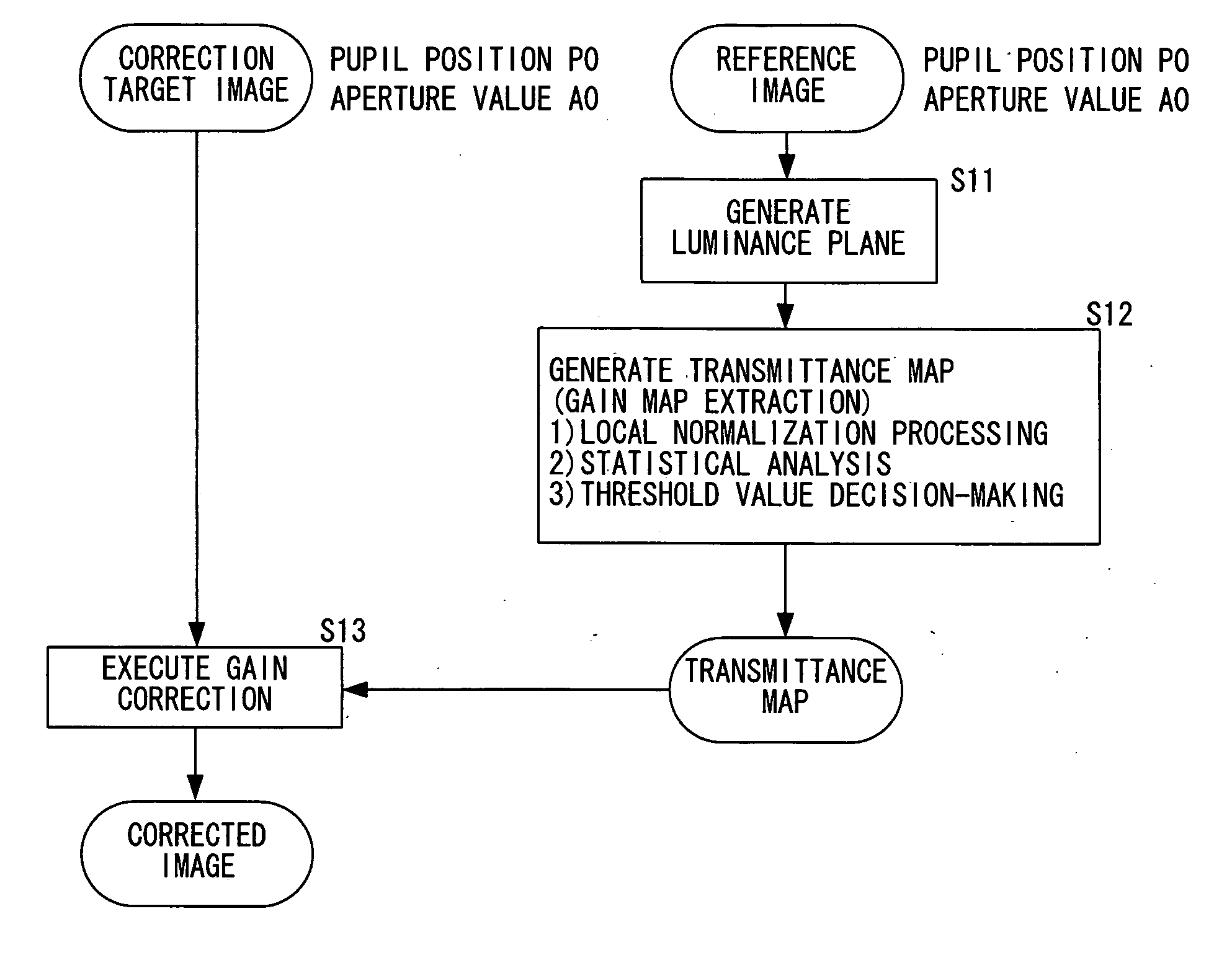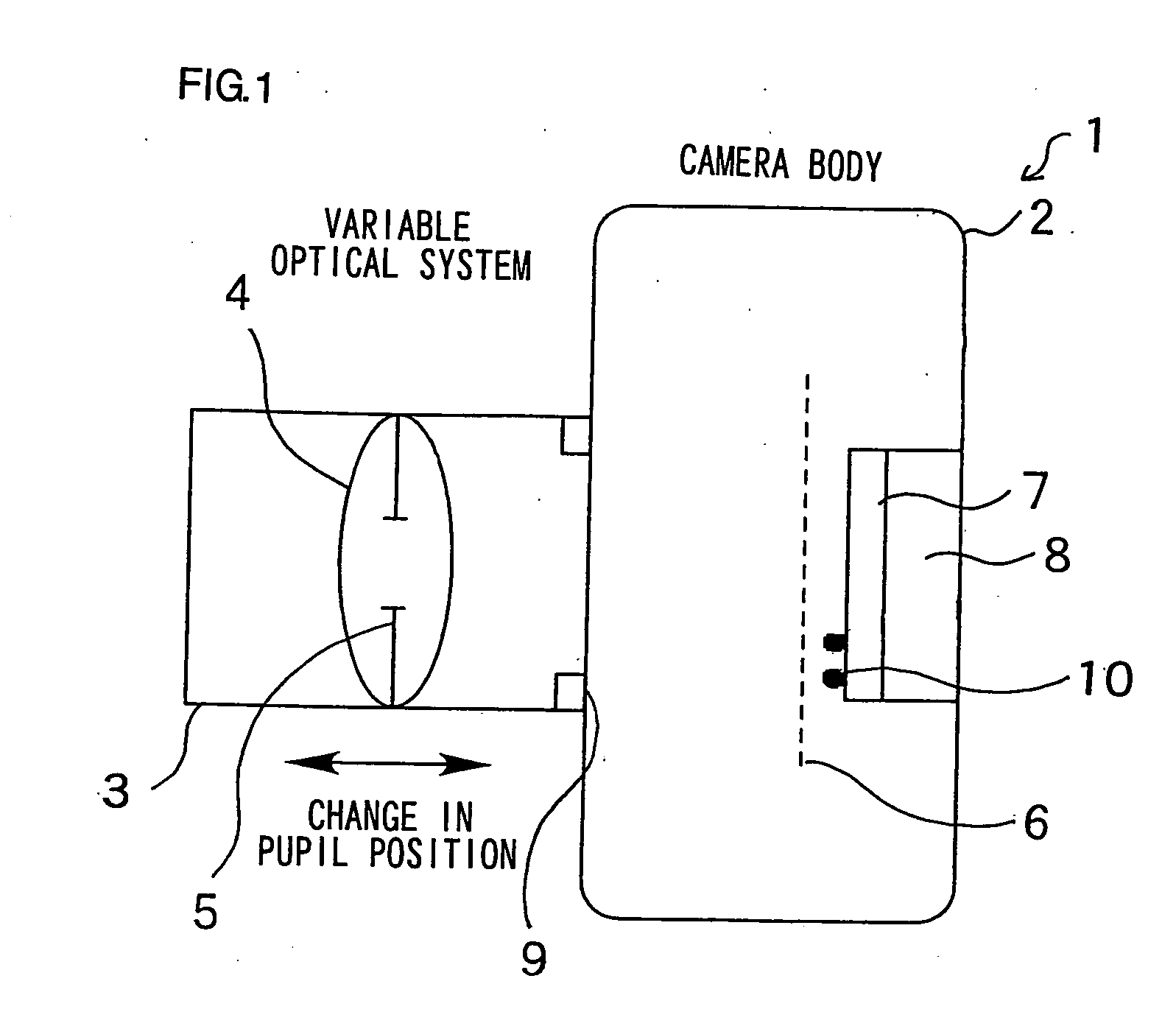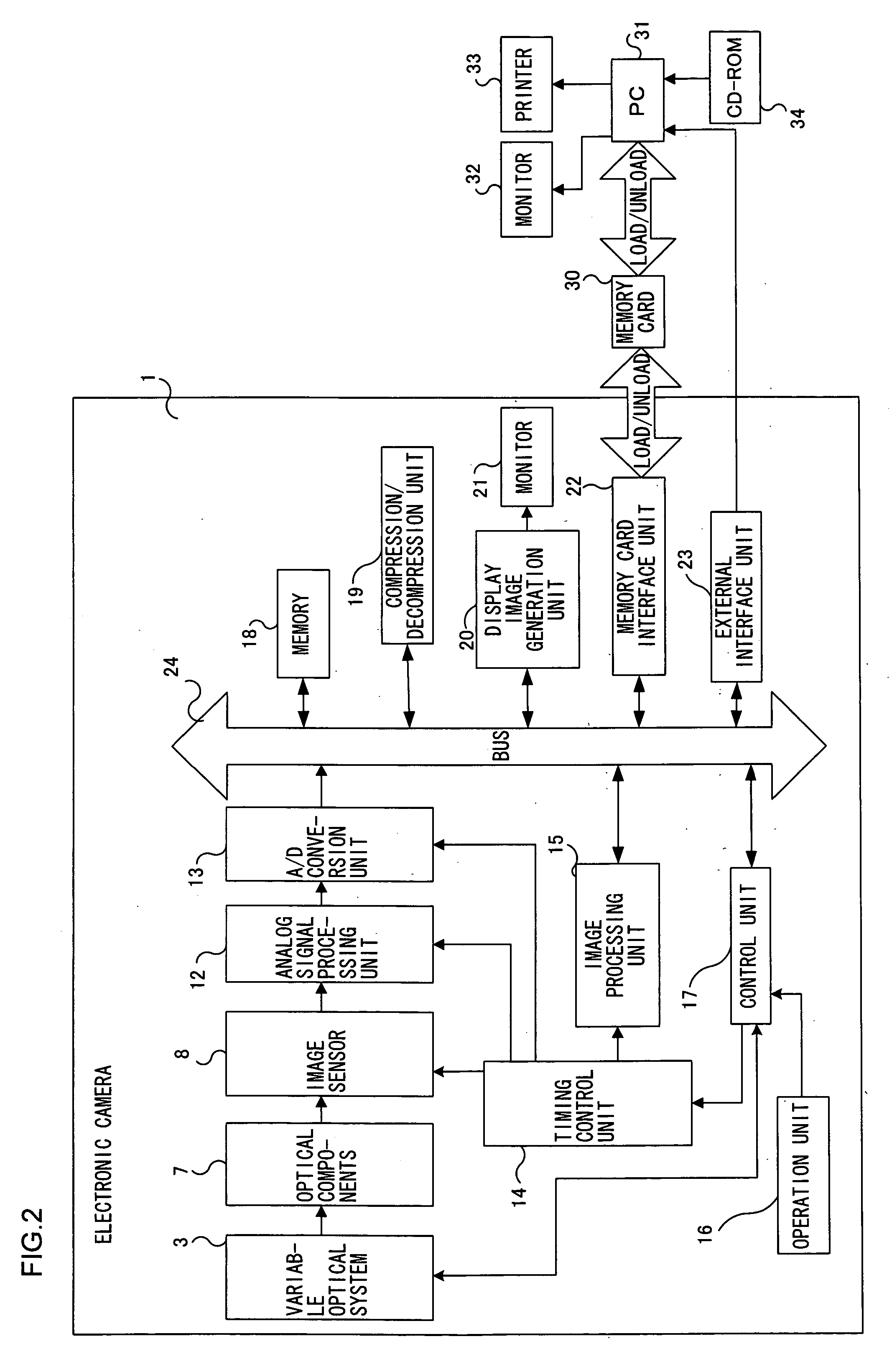Image processing device and image processing program
a technology of image processing and image processing program, which is applied in the field of image processing apparatus, can solve the problems of inability to obtain transmittance data of a completely uniform surface with an electronic camera, the video camera in the related art is not designed to handle changes in optical conditions other than aperture values, and the dust conditions that change over time appearing in photographed images tend to be more serious. , to achieve the effect of removing the mismatch of optical conditions
- Summary
- Abstract
- Description
- Claims
- Application Information
AI Technical Summary
Benefits of technology
Problems solved by technology
Method used
Image
Examples
first embodiment
[0113] (Structures of Electronic Camera and Personal Computer)
[0114]FIG. 1 shows the structure of a single lens reflex electronic still camera (hereafter referred to as an electronic camera) that allows the use of exchangeable lenses. The electronic camera 1 includes a camera body 2 and a variable optical system 3 constituted with a mount-type exchangeable lens. The variable optical system 3 includes a built-in lens 4 and a built-in aperture 5. While the lens 4 is constituted with a set of a plurality of optical lenses, a single representative lens is shown in the figure, and the position of the lens 4 is referred to as a main pupil position (hereafter simply referred to as a pupil position). The variable optical system 3 may be a zoom lens. The pupil position is indicated with a value determined in correspondence to the lens type or the zoom position of the zoom lens. It may be affected by the focal length, as well.
[0115] The camera body 2 includes a shutter 6, optical components...
second embodiment
[0156] In the second embodiment, a single reference image photographed to obtain dust information is used for dust shadow removal in conjunction with a plurality of images photographed under varying optical photographing conditions. Since the structures of the electronic camera 1 and the PC 31 functioning as the image processing apparatus are identical to those in the first embodiment, their explanation is omitted.
[0157] (Operation Executed on Electronic Camera Side)
[0158]FIG. 7 shows the photographing procedure executed at the electronic camera 1 in the second embodiment.
1) A uniform surface photographing operation 201 is executed at a pupil position P0 and an aperture value A0 and reference image data 0 are output.
2) A regular photographing operation 202 is executed at a pupil position P1 and an aperture value A1 and correction target image data 1 are output.
3) A regular photographing operation 203 is executed at a pupil position P2 and an aperture value A2 and correction ...
third embodiment
[0179] In the third embodiment, dust shadows in the correction target image are detected and eliminated without using any uniform surface reference image. The method adopts a basic principle that once a flat area (local image area over which the image is uniform) is found in the correction target image, the dust transmittance map generation processing (gain map extraction) executed on the reference image in the first embodiment can also be executed in conjunction with the correction target image. Since the electronic camera 1 and the PC 31 functioning as the image processing apparatus adopt structures similar to those in the first embodiment, their explanation is omitted.
[0180] (Operation Executed on Electronic Camera Side)
[0181]FIG. 14 shows the photographing procedure executed at the electronic camera 1 in the third embodiment.
1) A regular photographing operation 301 is executed at a pupil position P1 and an aperture value A1 and correction target image data 1 are output.
2) ...
PUM
 Login to View More
Login to View More Abstract
Description
Claims
Application Information
 Login to View More
Login to View More - R&D
- Intellectual Property
- Life Sciences
- Materials
- Tech Scout
- Unparalleled Data Quality
- Higher Quality Content
- 60% Fewer Hallucinations
Browse by: Latest US Patents, China's latest patents, Technical Efficacy Thesaurus, Application Domain, Technology Topic, Popular Technical Reports.
© 2025 PatSnap. All rights reserved.Legal|Privacy policy|Modern Slavery Act Transparency Statement|Sitemap|About US| Contact US: help@patsnap.com



